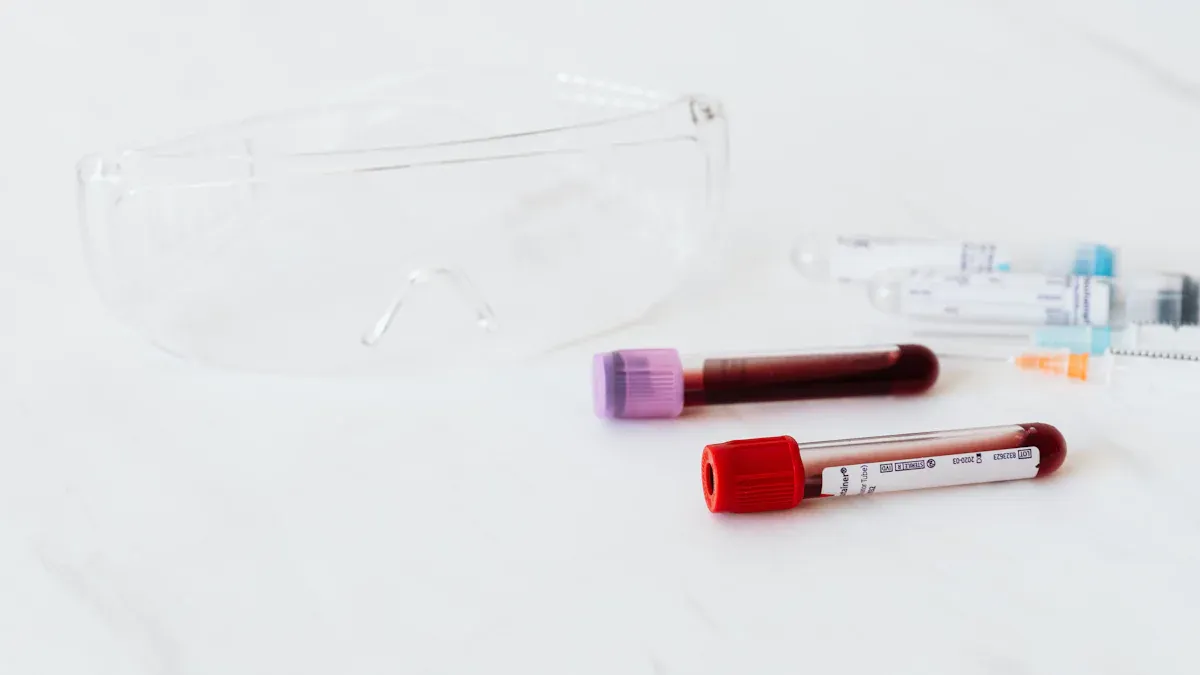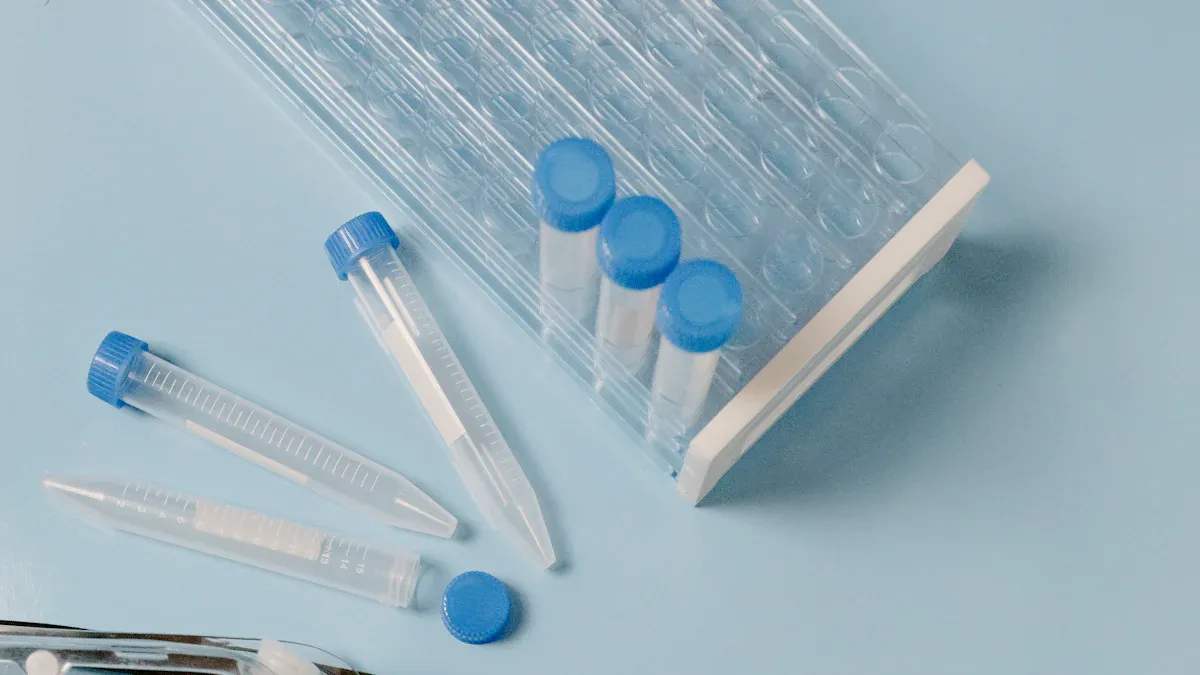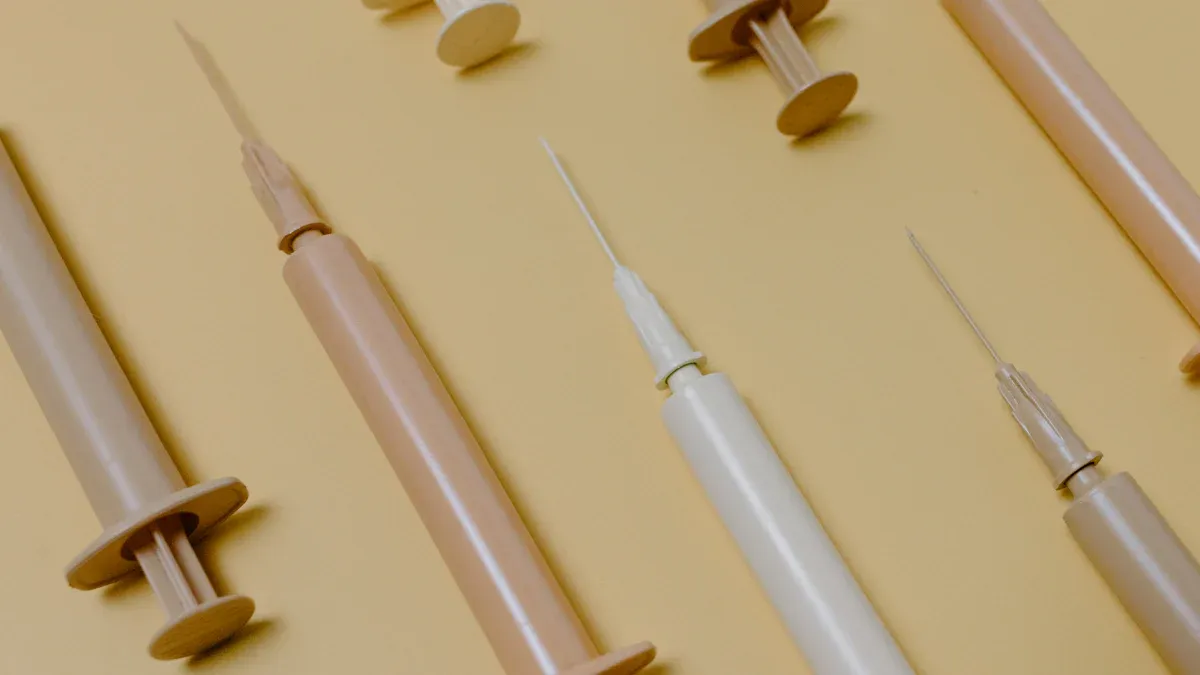Essential Tips for Choosing Nitinol Tubing

Selecting the right nitinol tubing for high-precision capillary applications requires careful attention to detail. You must evaluate the tubing's material properties, such as its flexibility and durability, to ensure it meets your specific needs. Precision plays a vital role in achieving consistent performance, especially in applications demanding exact dimensions. Additionally, understanding how the tubing interacts with its environment helps you make informed decisions. Whether for medical or industrial use, choosing nitinol tubing for high-precision capillary applications ensures optimal functionality and long-term reliability.
Key Takeaways
Nitinol tubing is special because it bends and returns to shape. This makes it great for exact uses.
Pick a trusted supplier with certifications like ISO 13485. This ensures the tubing is safe and high-quality.
Exact sizes matter; advanced tools help make perfect inner and outer sizes.
Smooth surfaces are important; polishing makes it safer and lowers infection risks.
Custom designs let nitinol tubing fit specific needs. This helps it work well in medical and industrial jobs.
Material Properties of Nitinol Tubing

Superelasticity and Shape Memory
Nitinol stands out for its remarkable superelasticity and shape memory properties. These characteristics allow the material to return to its original shape after deformation, making it ideal for high-precision applications. For example, nitinol tubing can undergo significant bending or twisting without permanent damage, which is crucial in dynamic environments. Research highlights how thermomechanical processing enhances these properties, ensuring consistent performance under various conditions.
Study Title | Description |
|---|---|
Axial-Torsion Behavior of Superelastic Tubes: Part I, Proportional Isothermal Experiments | An experimental study of the superelastic effect in a shape-memory Nitinol alloy under biaxial loading. |
Impact of thermomechanical texture on the superelastic response of Nitinol implants | This study investigates how thermomechanical processing affects the superelastic properties of Nitinol, providing quantifiable data on its performance under various conditions. |
Experimental Study of the Biaxial Cyclic Behavior of Thin-Wall Tubes of NiTi Shape Memory Alloys | This research presents experimental results on the cyclic behavior of NiTi tubes, contributing to the understanding of their superelastic and shape memory characteristics. |
These studies demonstrate nitinol's ability to maintain its structural integrity, even under extreme stress, making it a preferred choice for biomedical applications.
Biocompatibility and Medical Applications
Nitinol tubing is widely used in biomedical applications due to its excellent biocompatibility. This property ensures that the material interacts safely with human tissues, reducing the risk of adverse reactions. Clinical studies show minimal tissue reactions post-implantation, with histological evaluations scoring between 0 and 1. Additionally, nitinol implants have achieved a sustained 30% reduction in intraocular pressure over six months, proving their effectiveness in medical treatments.
Evidence Type | Description |
|---|---|
Tissue Reactions | Minimal tissue reactions post-implantation, with scores ranging from 0 to 1 for all histological evaluation indices. |
Intraocular Pressure Reduction | Achieved a sustained 30% reduction in intraocular pressure (IOP) from baseline levels over six months. |
Histological Findings | No significant inflammatory responses observed; no polymorphonuclear leukocytes, plasma cells, or necrosis in any of the examined eyes. |
These findings highlight nitinol's reliability in biomedical applications, from stents to surgical instruments, where safety and performance are paramount.
Corrosion Resistance and Longevity
Corrosion resistance is another key property of nitinol tubing. This material withstands harsh environments, including exposure to bodily fluids and industrial chemicals, without degrading. Its longevity ensures that devices made from nitinol maintain their functionality over extended periods. Studies on fatigue behavior reveal how different processing methods impact the material's durability. For instance, variations in strain amplitudes correlate with the number of cycles until fracture, emphasizing the importance of selecting high-quality nitinol tubing for long-term use.
The combination of corrosion resistance and durability makes nitinol tubing a reliable choice for both biomedical and industrial applications. Whether used in medical implants or precision instruments, its ability to resist wear and tear ensures consistent performance.
Dimensional Precision in Nitinol Tubing
Inner and Outer Diameter Accuracy
Achieving precise inner and outer diameters is critical for nitinol tubing, especially in applications requiring high-performance capillary systems. Manufacturing processes like welding and drawing ensure the raw material forms into tubes with specific dimensions. Laser cutting further refines these measurements, delivering the exact specifications needed for your application. Inspection techniques, including laser micrometers and optical comparators, validate the accuracy of these dimensions.
The tube undergoes welding or drawing to form the desired shape.
Laser cutting ensures the dimensions meet precise requirements.
Inspection confirms compliance with design standards.
These steps guarantee dimensional accuracy, which is essential for maintaining the tubing's functionality in demanding environments.
Wall Thickness and Structural Integrity
Wall thickness plays a pivotal role in the structural integrity of nitinol tubing. Variations in thickness can influence mechanical properties and fatigue resistance, which are crucial for long-term performance. Studies show that thicker walls often enhance mechanical properties, making the tubing more reliable for medical devices like stents. Processing methods, however, can introduce non-uniformity, affecting the tubing's overall performance.
Aspect | Description |
|---|---|
Wall Thickness Impact | Variations affect mechanical properties and fatigue resistance. |
Tube Processing Effects | Non-uniformity from processing impacts structural integrity and reliability. |
Non-destructive testing methods, such as ultrasonic inspection, help identify inconsistencies in wall thickness, ensuring the tubing meets your application's requirements.
Tolerances for High-Precision Capillary Applications
Tolerances define the allowable deviation in dimensions, ensuring nitinol tubing performs as expected in high-precision applications. For outer diameters below 0.3mm, tolerances as tight as ±0.005mm are achievable. Inner diameter tolerances vary based on the tubing size, with smaller diameters requiring stricter controls. Advanced inspection tools like ultrasonic thickness gauges and profilometers verify compliance with these tolerances.
Outer Diameter (OD) (mm) | OD Tolerance (mm) | ID Tolerance (mm) |
|---|---|---|
OD≤0.3 | ±0.005 | ±0.010 |
0.3≤OD≤0.5 | ±0.007 | ±0.015 |
0.5≤OD≤1.5 | ±0.015 | ±0.020 |
1.5≤OD≤2.5 | ±0.020 | ±0.030 |
2.5≤OD≤3.5 | ±0.020 | ±0.040 |

By maintaining strict tolerances, nitinol tubing ensures consistent performance in applications requiring high precision.
Surface Finish and Coatings for Performance

Importance of Surface Quality
The surface quality of nitinol tubing directly impacts its performance, especially in medical and industrial applications. A smooth surface reduces friction, minimizes blood component adhesion, and enhances tissue integration. Cleaning and polishing processes remove impurities and imperfections, ensuring a flawless finish that meets stringent healthcare standards. Electropolishing, a common surface treatment, eliminates microscopic irregularities, improving biocompatibility and corrosion resistance. This process also reduces nickel ion leaching, which is critical for safe medical use.
Surface imperfections can compromise the tubing's functionality. Poor surface quality increases the risk of infection and reduces the tubing's fatigue life. Stringent quality checks ensure a smooth and defect-free finish, enhancing both safety and performance.
Coating Options for Enhanced Durability
Coatings play a vital role in extending the lifespan of nitinol tubing. Protective coatings create barriers that reduce ion leaching and improve corrosion resistance. These coatings also enhance hemocompatibility, making the tubing suitable for medical devices like stents and catheters. Common coating methods include plasma spraying, chemical vapor deposition, and polymer coatings. Each method offers unique benefits, allowing you to choose the best option for your application.
Performance Metric | Description |
|---|---|
Electropolishing | Achieves smooth surface finish, reduces nickel ion leaching, enhances biocompatibility and hemocompatibility. |
Coating Processes | Creates protective barriers, reduces ion leaching, enhances corrosion resistance, and improves hemocompatibility. |
Surface Quality | Directly impacts functionality, reduces friction, minimizes blood component adhesion, and enhances tissue integration. |
Precision metal cutting techniques, such as laser cutting, ensure the tubing's surface remains intact during manufacturing. These cutting methods prevent damage that could compromise the coating's effectiveness.
Avoiding Surface Defects
Surface defects can significantly affect the performance of nitinol tubing. Scratches, pits, and other imperfections increase the risk of corrosion and reduce the tubing's structural integrity. Advanced cutting methods, like laser and waterjet cutting, minimize the risk of defects during manufacturing. These precision metal cutting techniques ensure the tubing maintains its structural and surface integrity.
Quality control measures, such as ultrasonic testing and optical inspections, identify and eliminate defects before the tubing reaches the end user. By prioritizing surface quality and using advanced cutting methods, you can ensure the tubing meets the highest performance standards.
Application-Specific Considerations for Nitinol Tubing
Medical Device Requirements
Nitinol tubing plays a vital role in the biomedical field due to its unique properties. You’ll find it essential in creating self-expanding stents, which help maintain proper blood flow in patients with coronary artery disease. Its superelasticity and shape memory allow these stents to expand and conform to the vessel walls, ensuring effective treatment. Additionally, nitinol is widely used in guidewires and retrieval devices, which are critical for navigating the body during minimally invasive procedures.
The biocompatibility of nitinol ensures safe interaction with human tissues, making it suitable for orthodontic instruments and surgical tools. Its corrosion resistance further enhances its reliability in clinical settings. These attributes make nitinol tubing indispensable in the development of advanced medical devices that prioritize patient safety and performance.
Industrial Applications and Performance Demands
In industrial applications, nitinol tubing demonstrates unmatched reliability under demanding conditions. Its superelasticity and shape memory effect allow it to recover its original shape after deformation, making it ideal for components exposed to stress. For example, aerospace industries use nitinol for energy-absorbing components during impacts, improving durability.
Performance Metric | Description |
|---|---|
Material Composition | Variations in nickel-titanium alloy content affect shape memory and mechanical properties. |
Dimensional Accuracy | Ensures stents meet exact size and shape requirements for proper deployment and functionality. |
Surface Quality | Smooth finishes enhance biocompatibility and reduce infection risk. |
High-purity nitinol enhances durability, especially in applications prone to fatigue fractures. This makes it a preferred choice for precision instruments and long-term industrial use.
Customization for Unique Capillary Applications
Customization is key when designing nitinol tubing for unique capillary applications. The material’s ability to undergo significant deformation and return to its original shape enhances flexibility in design. This is particularly beneficial for medical instruments navigating complex anatomical pathways, minimizing trauma to patients.
The shape memory effect of nitinol allows it to return to a predetermined shape when heated. This property is utilized in self-expanding stents and responsive sensors for environmental monitoring. In aerospace, nitinol’s superelasticity ensures components can withstand extreme conditions without compromising performance. These customization options make nitinol tubing a versatile solution for various high-precision applications, including capillary tubing.
Choosing a Reliable Supplier for Nitinol Tubing
Certifications and Compliance Standards
Certifications validate a supplier's ability to meet industry standards, ensuring the tubing's quality and safety. When choosing a supplier, look for compliance with ISO 13485, which is essential for medical applications. This certification supports 68% of the global nitinol demand in 2023. Facilities manufacturing nitinol tubing for Class III medical devices must also comply with FDA/QSR regulations, which require rigorous validation processes costing over $25 million.
Compliance Standard | Details |
|---|---|
ISO 13485 Certification | Required for medical applications, which account for 68% of global nitinol demand in 2023. |
FDA/QSR Compliance | Manufacturing facilities must comply, with validation costs exceeding $25 million for Class III device materials. |
EU Medical Device Regulation | Mandates full material traceability, adding $3-5 million in annual compliance costs. |
FDA Audit Failure Rate | 43% of new material suppliers fail due to inadequate documentation of impurity controls. |
Critical Impurity Levels | Oxygen (<0.05 wt%) and carbon (<0.02 wt%) levels are crucial for corrosion resistance. |
Certifications like these ensure the tubing meets stringent requirements for medical devices, reducing risks and enhancing patient outcomes.
Customization and Manufacturing Capabilities
A reliable supplier offers advanced manufacturing techniques to customize nitinol tubing for specific applications. Processes like additive manufacturing allow for the creation of complex geometries tailored to clinical needs. For example, stents and guidewires benefit from intricate designs that improve their effectiveness.
Advanced manufacturing techniques, such as additive manufacturing, enhance the customization of nitinol tubes for specific patient needs.
Nitinol's shape memory and superelasticity allow for the design of complex medical devices tailored to clinical needs.
Techniques like laser cutting and additive manufacturing enable the creation of designs tailored to specific medical applications.
Customization ensures the tubing meets precise specifications, making it versatile for both medical and industrial applications.
Quality Assurance and Testing Protocols
Quality assurance guarantees the tubing performs reliably under demanding conditions. Suppliers use robust testing protocols to validate the material's integrity. Ultrasonic testing ensures even wall thickness, preventing issues in medical tools. Strength tests measure the tubing's ability to stretch or hold weight, while heat tests confirm its shape memory properties.
Testing Method | Purpose |
|---|---|
Ultrasonic Testing | Ensures even wall thickness to prevent issues in medical tools |
Strength Tests | Checks how much the tube can stretch or hold |
Heat Tests | Confirms shape memory abilities |
X-ray Tests | Ensures material purity and strength |
Reliable suppliers prioritize these tests to deliver tubing that meets your application’s requirements, ensuring consistent performance and safety.
Choosing the right nitinol tubing involves understanding its material properties, dimensional precision, and surface finish. These factors ensure the tubing performs reliably in critical applications like implants. Nitinol's unique properties, such as shape memory and superelasticity, require precise manufacturing and rigorous testing. Processes like electropolishing eliminate imperfections, reduce nickel release, and enhance biocompatibility, making the tubing ideal for medical instruments and implants. Dimensional checks using advanced tools confirm the tubing's size and shape, ensuring compliance with stringent standards.
Partnering with a trusted supplier offers significant advantages. Suppliers with expertise provide high-quality nitinol alloys tailored to your needs. Their reliability ensures consistent performance, while rigorous testing protocols guarantee the tubing meets application-specific demands.
Feature | Benefit |
|---|---|
Quality | Ensures high-performance nitinol alloys that meet rigorous standards. |
Reliability | Trusted suppliers provide consistent product performance over time. |
Expertise | Experienced engineers tailor solutions to meet specific application needs. |
Aligning tubing specifications with your application needs is crucial. Whether for medical implants or industrial tools, high-quality nitinol tubing ensures safety, durability, and performance. By choosing a reliable supplier, you gain access to expertise and quality assurance, ensuring your implants and devices meet the highest standards.
FAQ
What makes nitinol tubing unique compared to other materials?
Nitinol tubing stands out due to its superelasticity and shape memory properties. These features allow it to return to its original shape after deformation. Its biocompatibility and corrosion resistance make it ideal for medical and industrial applications requiring durability and precision.
How do you ensure the dimensional accuracy of nitinol tubing?
Manufacturers use advanced techniques like laser cutting and drawing to achieve precise dimensions. Inspection tools, such as laser micrometers and ultrasonic gauges, verify the tubing's inner and outer diameters. These processes ensure the tubing meets strict tolerances for high-precision applications.
Can nitinol tubing be customized for specific applications?
Yes, nitinol tubing can be tailored to meet unique requirements. Customization options include specific dimensions, wall thicknesses, and surface finishes. Advanced manufacturing techniques, like additive manufacturing and laser cutting, enable the creation of complex geometries for medical and industrial needs.
Tip: Always communicate your exact specifications to the supplier for optimal results.
Is nitinol tubing safe for medical use?
Nitinol tubing is highly biocompatible, making it safe for medical applications. Its corrosion resistance and minimal nickel ion leaching reduce the risk of adverse reactions. These properties make it suitable for implants, stents, and surgical instruments.
How do you choose a reliable supplier for nitinol tubing?
Look for suppliers with certifications like ISO 13485 and FDA compliance. Ensure they offer customization options and robust quality assurance protocols. Reliable suppliers also provide thorough testing, such as ultrasonic and strength tests, to guarantee the tubing meets your application’s requirements.
Note: Partnering with a certified supplier ensures consistent quality and performance.
See Also
A Comprehensive Approach to Choosing Nitinol Tubing Wisely
Finding the Ideal Supplier for Your Nitinol Tubing Requirements
The Process of Manufacturing Nitinol Tubing for Healthcare Uses
An In-Depth Resource on Nitinol Parts and Production Methods
Detailed Instructions for Creating Nitinol Microtubing in Neurovascular Uses

